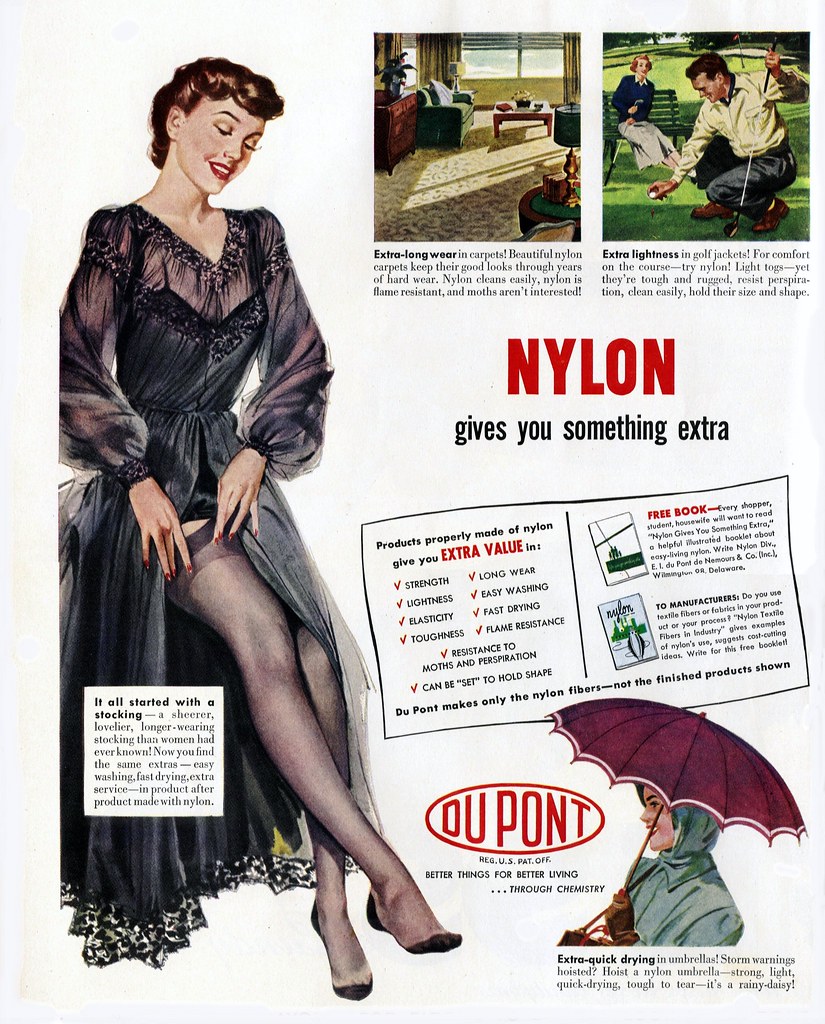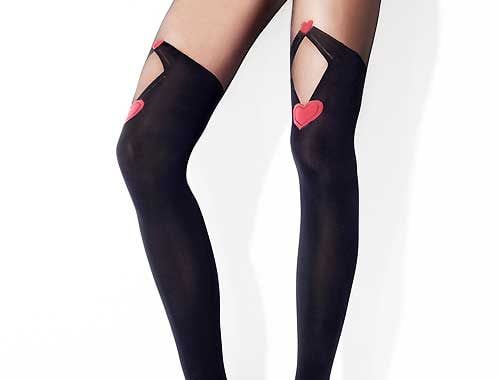The History Of Nylon
The History Of Nylon
The history of nylon really starts with the term hosiery which was first coined around the early 16th century. This was mainly due to the fact that tights in its singular form were called hose. This is where the word pantyhose came from. Most men at this time wore hose as a part of their daily outfits. If you’ve ever been to see a Shakespearean play, you will no doubt have seen them. Most of the characters wear hose, unless it is one of Shakespeare’s histories. These were mainly knitted garments. They were made from yarns such as cotton and silk.
These products were quite expensive as at the time. Almost all leg wear was made from silk imported from China. It was not good etiquette for women to show their legs. So hosiery was not a necessary part of a lady’s wardrobe. The 20th century soon changed all that. Once the Victorian customs of dressing a lady’s legs was gone, legs were out. Sort of. People found it fashionable and fun to show off their shapely figures. They wore expressive clothes a lot more and leg wear soon became a more acceptable type of garment.
The Invention of Nylon
The history of nylon began in the interwar period. The 1930s brought us the invention of this now very famous fabric. We still use it each and every day. But it was a long time for the creators to understand its potential. This product was to change the face of hosiery forever. Nylon is mostly credited to Wallace Carothers. The young Carothers, only 31 at the time of his move to DuPont, was a brilliant scientist. He began his career as a professor of chemistry at Harvard, but came to dislike academia.
He was undoubtedly the most instrumental person in the team that developed nylon. But he did not work alone. In 1928, Carothers was given a small team of men by his new employer. Among them was young scientist Julian Hill. They started working as researchers for the DuPont Company. They let the young professor carry out any research he wished so long as it was related to crude oil. Carothers spend time studying chains of molecules called polymers. They wanted to find new uses for crude oil. They specifically wanted to create innovative new materials, fabrics and manufacturing components. He wanted to try and make a synthetic material using oil. The goal was a material that has a molecular weight of over 4200, making it very robust. This was a nearly impossible feat at the time.
The Accidental Invention
Whilst Carothers and the team worked on this theoretical material, they made other breakthroughs. You see, not only is Carothers the inventor of nylon, but he invented neoprene too. Neoprene is a very sturdy synthetic material that imitates the qualities of rubber. You may know this fabric from its most iconic use, in the wetsuit. If you have ever been snorkelling or diving, you may have worn a wetsuit. It is a soft and squishy item of clothing that keeps the water away from your skin. It was the first synthetic rubber, and the first major breakthrough of the Carothers team. After they had made the first synthetic rubber, they wanted to make a synthetic silk. That is where nylon came in.
How DuPont Developed Nylon
Next they attempted to find that elusive substitute for silk. As we all know, silk was very expensive. To be able to substitute it well would mean a large commercial boon to his employer. Eventually they found a method to make it. They would pull a heated rod out of a mixture of carbon, alcohol, coal tar, and water. Carothers found that the mixture came out stretched. At room temperature, it had a silk-like look and feel. The texture was very similar to silk, and eventually this work culminated in the production the first nylon fabric. This was the start of a new era in the hosiery marketplace.
Nylon was very experimental and DuPont’s competition was already developing similar materials. Dupont decided it was essential to patent this product. DuPont did this in late 1939 and this new and wonderful synthetic fibre was finally born. To this day, DuPont or one of its registered manufacturers, produce all nylon in the world. Their exhibited this incredible new yarn in New York at the world famous Trade Fair. According to Charles Stine, Vice President of DuPont, nylon is the most revolutionary product man has encountered since the wheel. His exact words were even more bold. “We enter the world of tomorrow”. He didn’t go to the scientific community with this breakthrough first. Instead, Stine spread word around nearly three thousand women at the New York trade fair. And naturally, it became a big hit.
Nylon Stockings, A Woman’s Best Friend
The History Of Nylon, The Fabric Goes To War
In early 1942, the history of nylon would see its most important moment. It went to war and America used it to make American parachutes. It was first used with silk for the canopies. Then it was sole material, as it was affordable enough to make the whole thing from nylon. Later it found itself in use in tents because of its waterproof properties. Stockings remained a firm favourite though. Nylon stockings made for fantastic gifts, given by American soldiers to impress the ladies of Europe. They were very scarce until the end of the war, of course.
If a lady was unlucky enough to not be able to locate a pair of nylons, then the custom was to rub brown makeup on one’s legs and then carefully draw a black line from the heel right the way up the back of the leg. Thus giving the illusion of back-seamed stockings. But their scarcity was not through the inability to manufacture them. It was their startling demand. The end of the war did see an upturn in production of nylon. But the demand was so high that DuPont had to call a halt to all sales. They basically couldn’t make them fast enough. More than 10,000 anxious shoppers mobbed stores.
Nylon And Decline Of Fully-Fashioned Stockings
When nylon was first invented, the only hosiery available was the eternally stylish stockings. To make silk fit better, manufacturers would cut and sew stockings. This meant the addition of a simple seam that ran from the heel to the top of the leg. This meant that the garment had the shape of a leg and fit your own leg perfectly. And with that, the term fully fashioned stockings was born.
It also had a downside, there was little to no stretch in them. They are a specialist garment and come in a huge number of different sizes. That is so that they fit perfectly. There was a great deal of work that went into the manufacturer of the fully fashion stocking. It is still very difficult to make fully fashioned stockings. Machines are not suitable for the task as it requires a lot of dexterity. Because of this, there are only a handful of manufacturers worldwide who still make them. Gio fully fashioned stockings are one of these names. Their stockings are hand made by expert craftsmen in their British factory.
Fully fashion were expensive, but the only thing you could get. But nylon changed all this. Nylon stockings were superb for manufacturers. Designers make them in 3 or 4 sizes, not 10. And women with unusual sizing did not need special size made. They just pick something close enough, and it stretched to fit their leg.







One Comment
Jazz
Very useful info